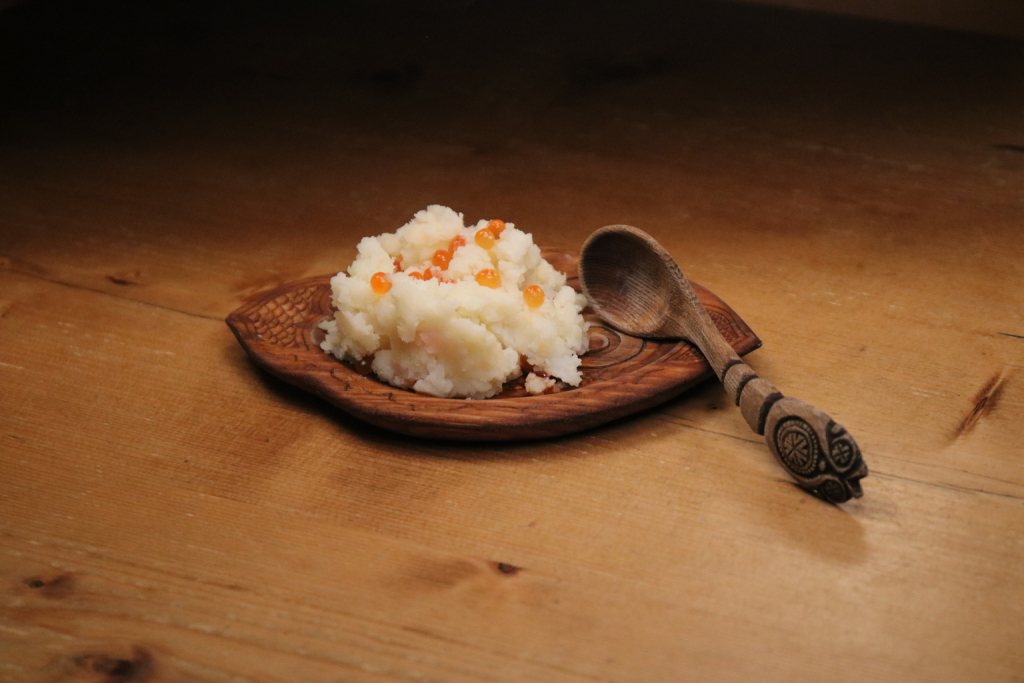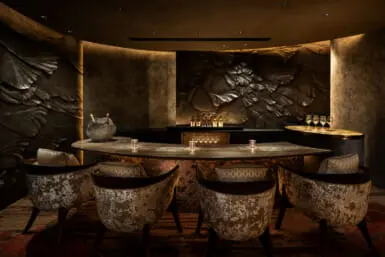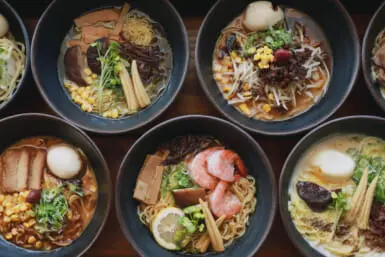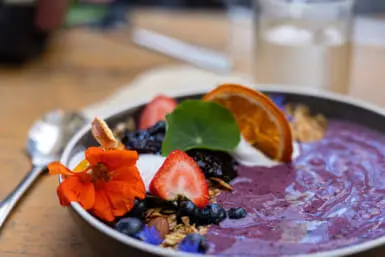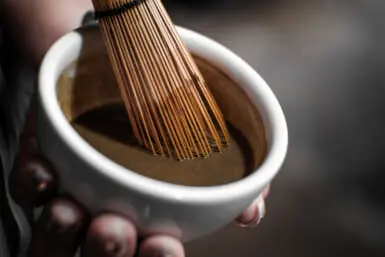Right by the thundering elevated train track in Shin-Okubo is a cluster of tiny izakaya eateries. You will probably struggle at first to notice Harukor (pronounced Harukoro) among them, as it inconspicuously looks like someone’s home. The little Ainu food restaurant seems to be as hard to find as the indigenous Ainu people themselves nowadays. But it’s certainly there and it’s the only place serving Ainu food in all of sprawling Tokyo.
The Ainu people are the indigenous population of Northern Japan, mostly Hokkaido, as well as some territories controlled by Russia today. An aggressive annexation and assimilation policy by the Meiji Japanese Government almost wiped out the Ainu people, their language and culture. Only recently have there been efforts to celebrate and protect them. With most of these efforts concentrated in Hokkaido, the Harukor restaurant is a standout exception in Tokyo. It’s a mini-revolution by one determined Ainu woman.
“I wanted to take all the feelings and culture of my ancestors and pass them on,” says Teruyo Usa, the proprietor of Harukor. Inspired by her grandmother and her mother, she’s been running the restaurant for just over a decade now.
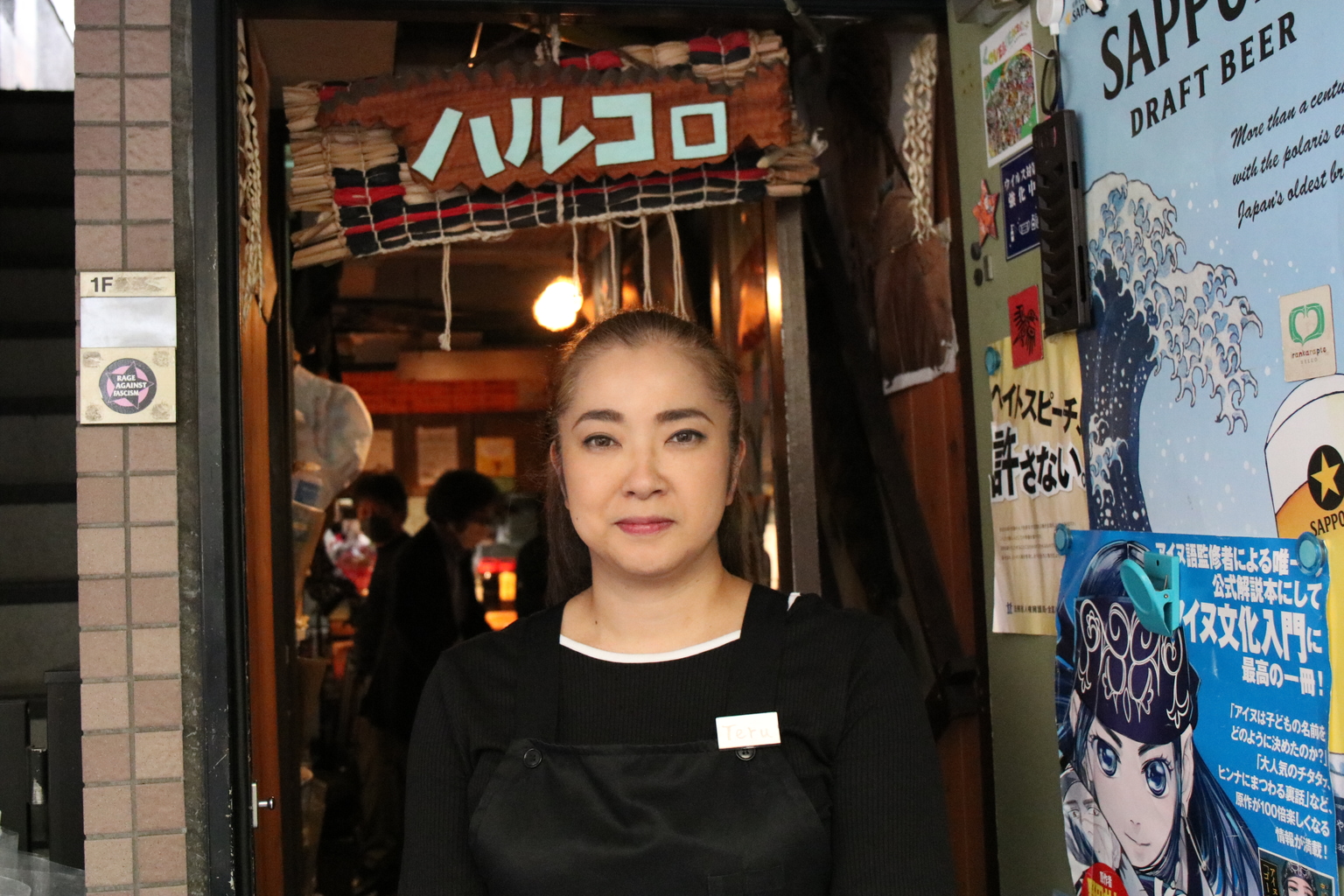
Teruyo Usa
Snatching the Ainu Cuisine Out of the Jaws of Oblivion
Harukor’s location is pretty telling of where the Ainu stand in modern Japanese society. Shin-Okubo is primarily known as Korea Town, but its narrow streets host a variety of global establishments including Vietnamese restaurants, Nepali grocery stores, K-pop blasting cosmetic shops and more. It is an obvious enclave of outsiders.
Usa has never had it easy. Her single mother had to move from Hokkaido to Tokyo when she was a child. The family was familiar with displacement, however, as Usa’s grandmother was forcibly relocated to Hokkaido from the Kuril Islands. Even though Ainu identity and roots are considered by many to this day as something to hide, Usa notes that the food was always there in her family. It was the unbreakable silent lifeline to a suppressed culture, even though as a child she did not fully understand that.
Moving to Tokyo was liberating for Usa’s family as her grandmother openly identified as Ainu. They also joined an Ainu culture group and Usa and her mother even worked at the group’s Rera Chise restaurant, the only Ainu restaurant in Tokyo at that time. It closed down after 14 years, spurring Usa and her mother to open a restaurant of their own. Surprisingly, Usa’s husband, who is not Ainu, does most of the cooking, having learned from his now late mother-in-law.

Grilled salmon, deer meat rice bowl and kitopiro garlic chahan fried rice
Ainu Food: Ingredients from the Kamuy Gods
Skilled hunters and gatherers, the Ainu people traditionally ate a lot of seafood, game meat, berries, wild plants and vegetables. Interacting with mainland Japanese culture then reshaped Ainu cuisine. Harukor serves a mix of Ainu and common Japanese dishes. Usa says she sources as many ingredients as possible from Hokkaido, especially the unique herbs and berries.
One Ainu dish she recommends is the Rataskep: mashed pumpkin with tiger beans and shikerebe berries that have a bitter yet uniquely pleasant taste. It’s a tame-looking dish that surprises with its character. Many unassuming dishes such as Chahan (Japanese fried rice) are spiced up with kitopiro, a type of wild garlic used by the Ainu both as food and medicine. In fact, many of the traditional herbs and foraged vegetables in Ainu cuisine double as herbal medicine, such as haskap berries, shikerebe bark and berries, kumasasa bamboo and so on. Large jars of these ingredients are lined up on the counter at Harukor.
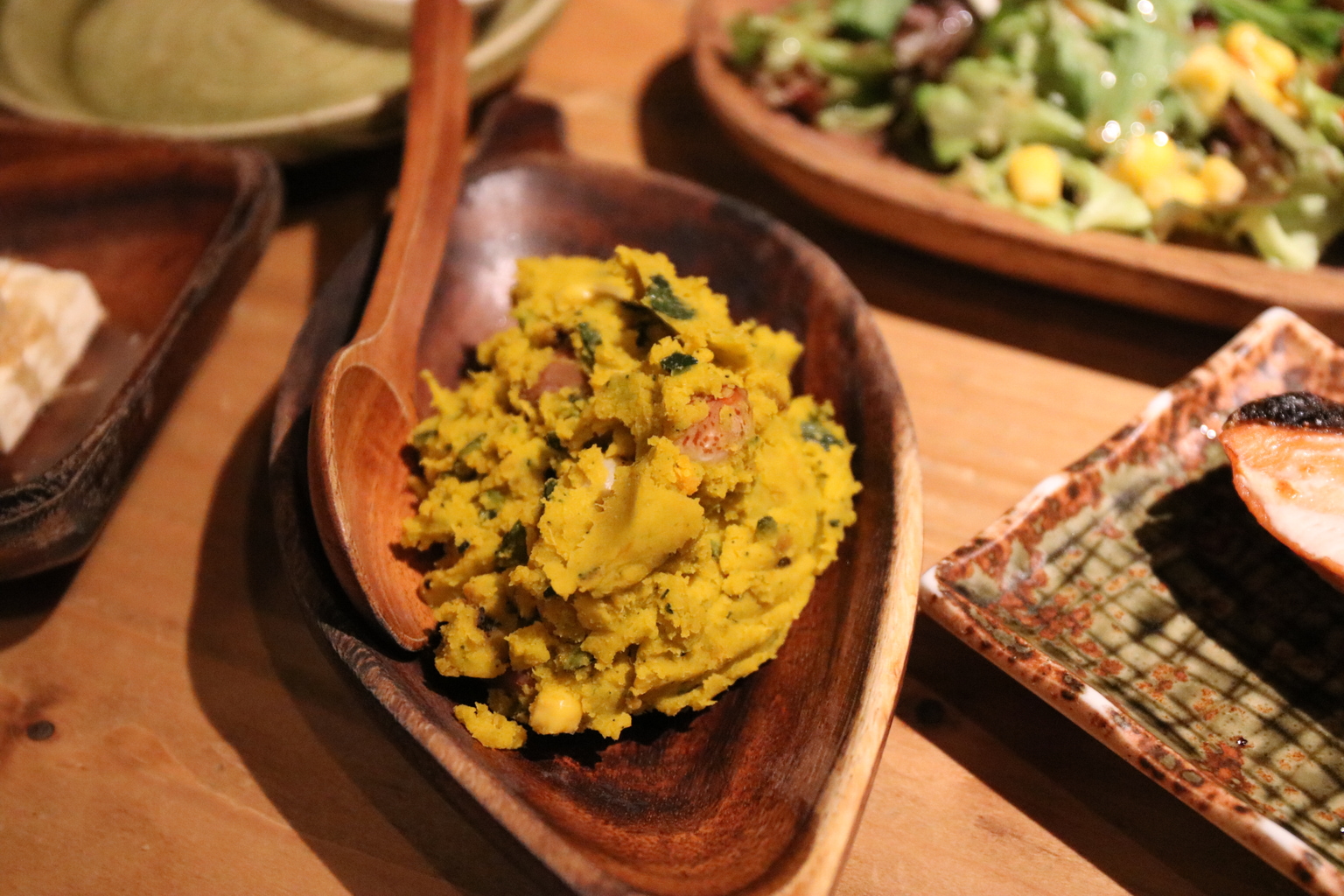
Rataskep
Bear is not on the Harukor menu, but it is served once in a blue moon. Salmon and deer are the staple protein sources in Ainu cuisine. Salmon is the star of many Ainu dishes, such as the traditional Ohaw soup. You can also order the Harukor version of oyakodon (literally “parent and child” dish) that consists of salmon and salmon roe over rice. Simply grilled salt-seasoned salmon is much juicer at Harukor. The Yezo sika deer steak is another star dish at the restaurant. There’s also thinly sliced grilled deer meat topping a bed of rice for a delicious spin on the gyudon beef bowl.
“Game meat caught in the wild and foraged herbs are much healthier for you,” Usa notes. Coming out steaming from Harukor’s kitchen, I can attest they are incredibly tasty too.
Serving Ainu Culture
Usa is very passionate about improving the status of Ainu people in Japan. They were only officially recognized as Japan’s indigenous people in 2019. She tells me she was impressed by the recognition given to indigenous people in Australia and New Zealand in comparison to the Ainu people.
She is honest and direct when it comes to the social realities of her people. “A little song and dance during the Olympics doesn’t do much to help us,” she tells me. “But coming here, eating real Ainu food and communicating with us is a better way to interact with Ainu culture.”
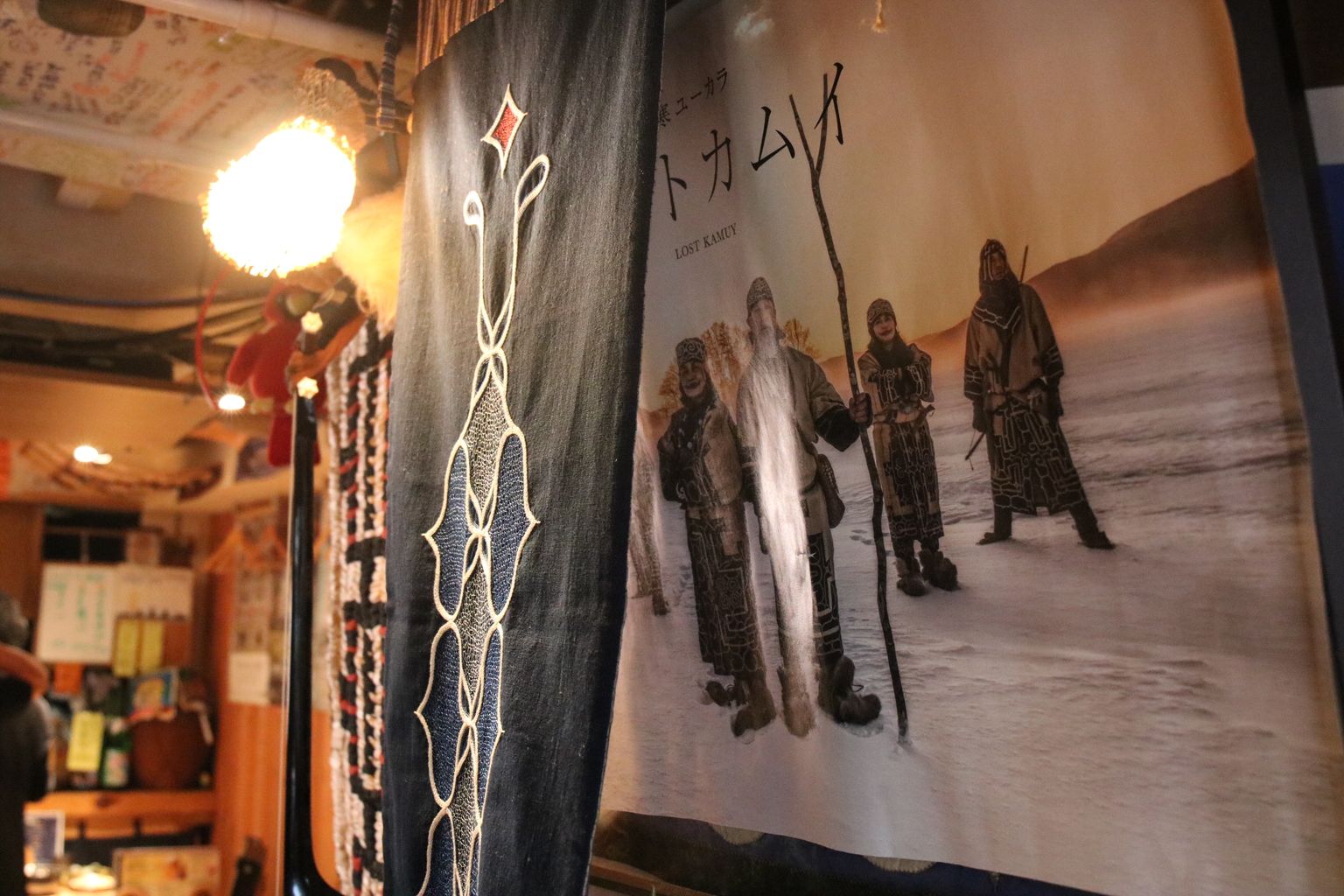
Harukor is tiny, just five tables huddled together and a small open kitchen. But that’s not rare in Tokyo. Every inch of space is used, the walls are adorned with Ainu traditional patterns as well as pop culture depicting Ainu culture such as the widely popular Golden Kamuy manga and the autograph of the mangaka who created it. The music in the background is always by Ainu artists.
Harukor sometimes hosts traditional Ainu craft workshops, nights with singing and dancing and meet-ups for the Ainu community. The workshops are announced on the website and they are usually open to everyone, provided you understand Japanese. The same goes for ordering food if you don’t want to go in there blind. But even if you order with eyes closed, go in with an open heart and enjoy the rare opportunity to partake in authentic Ainu culture.
Photos by Zoria Petkoska

